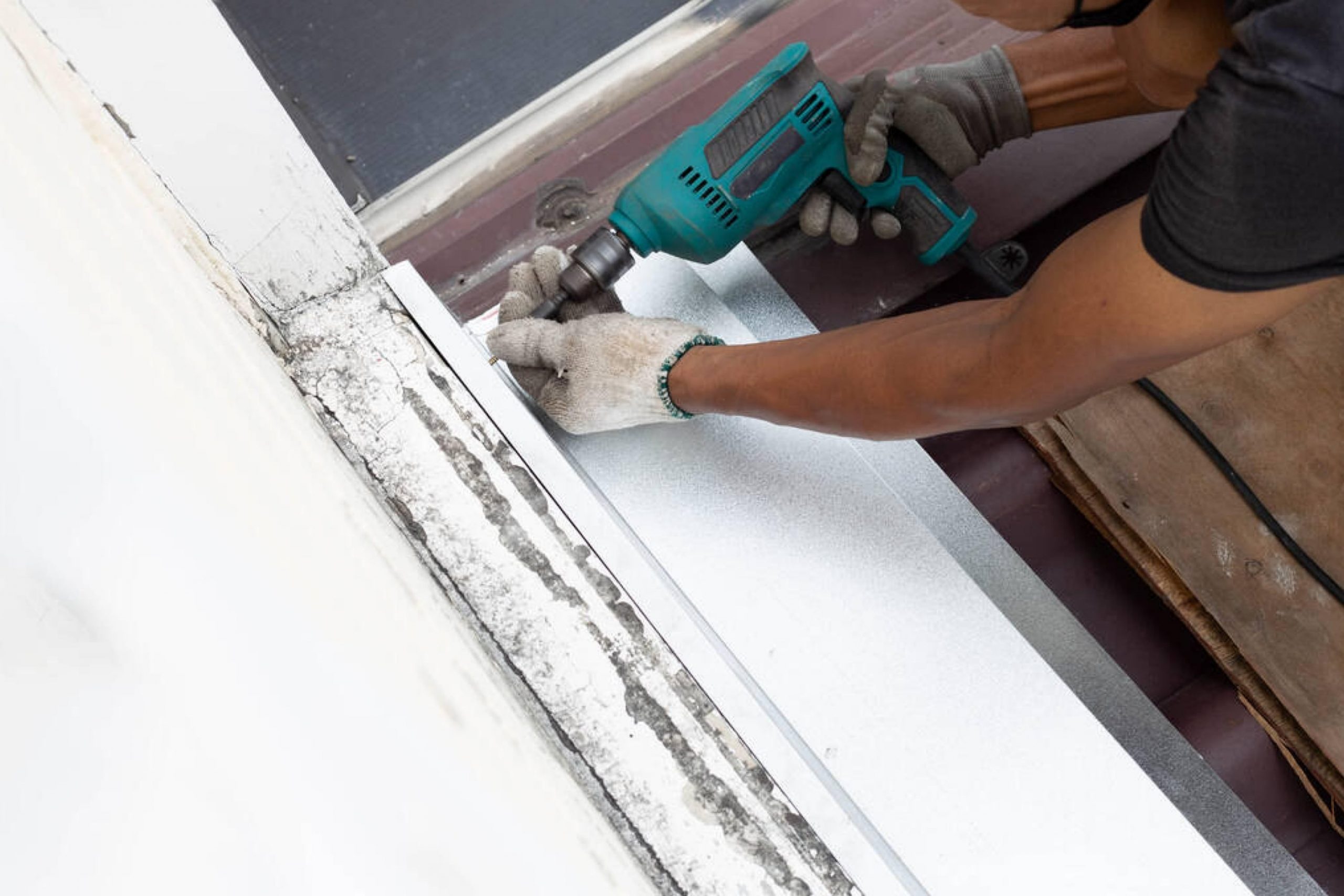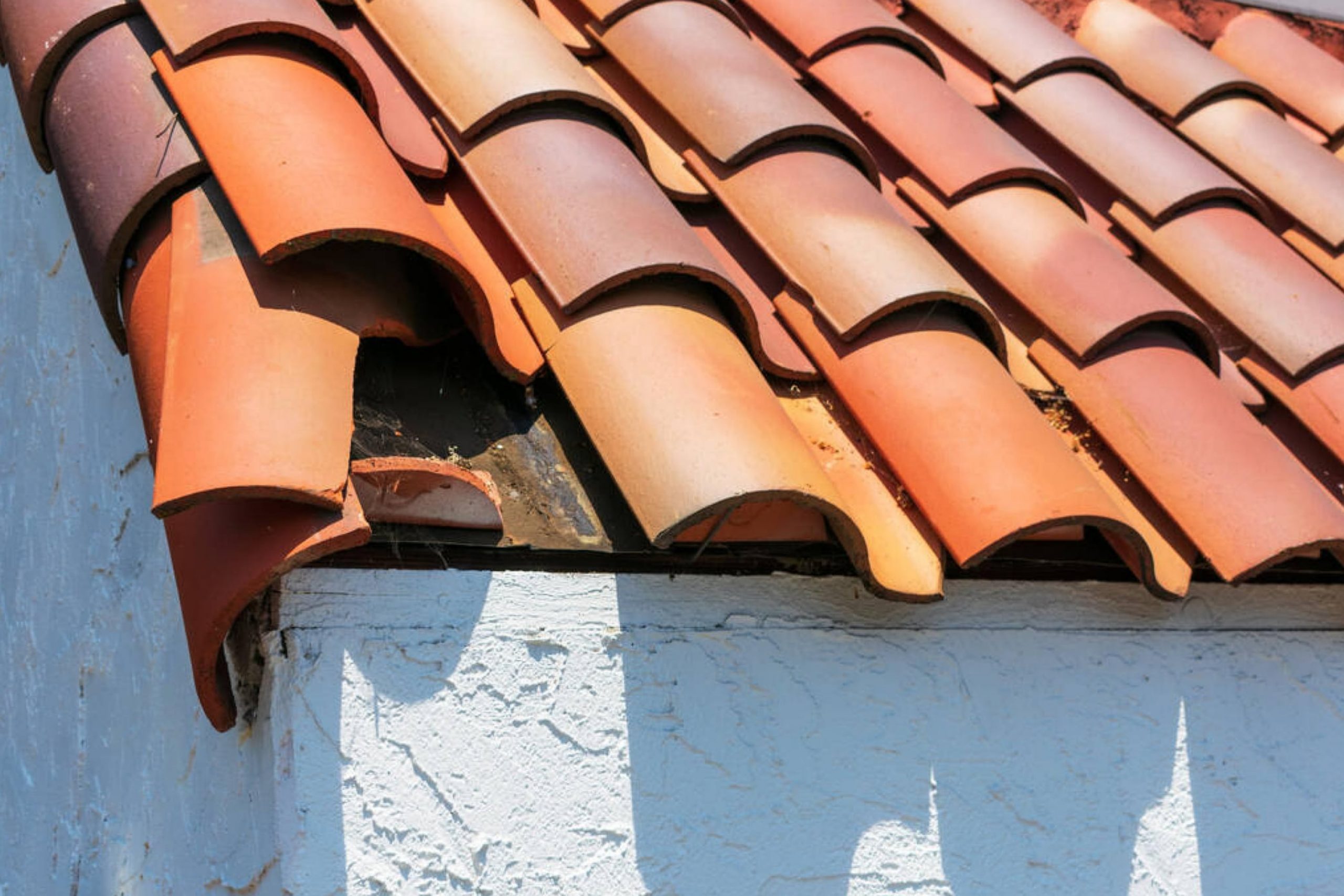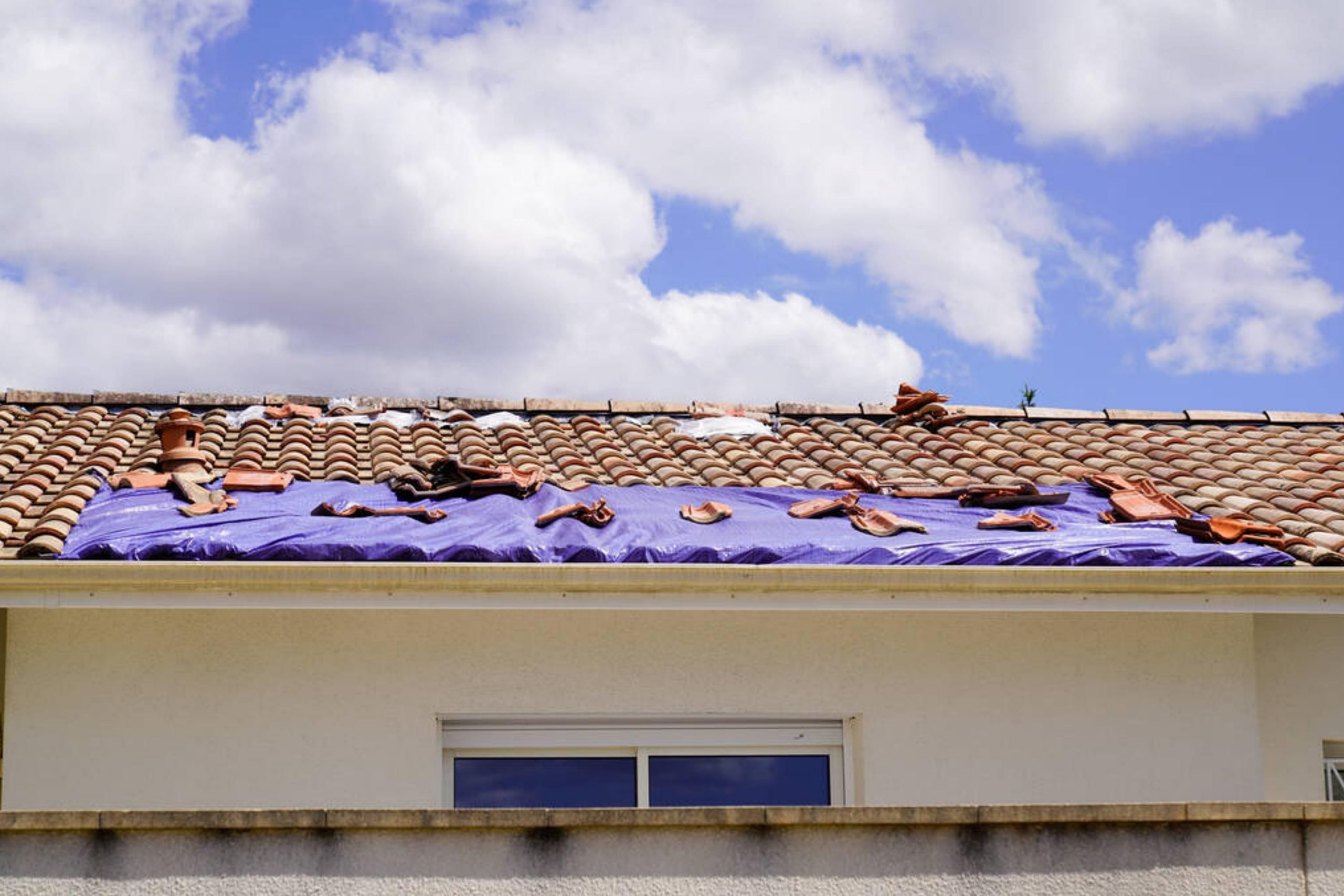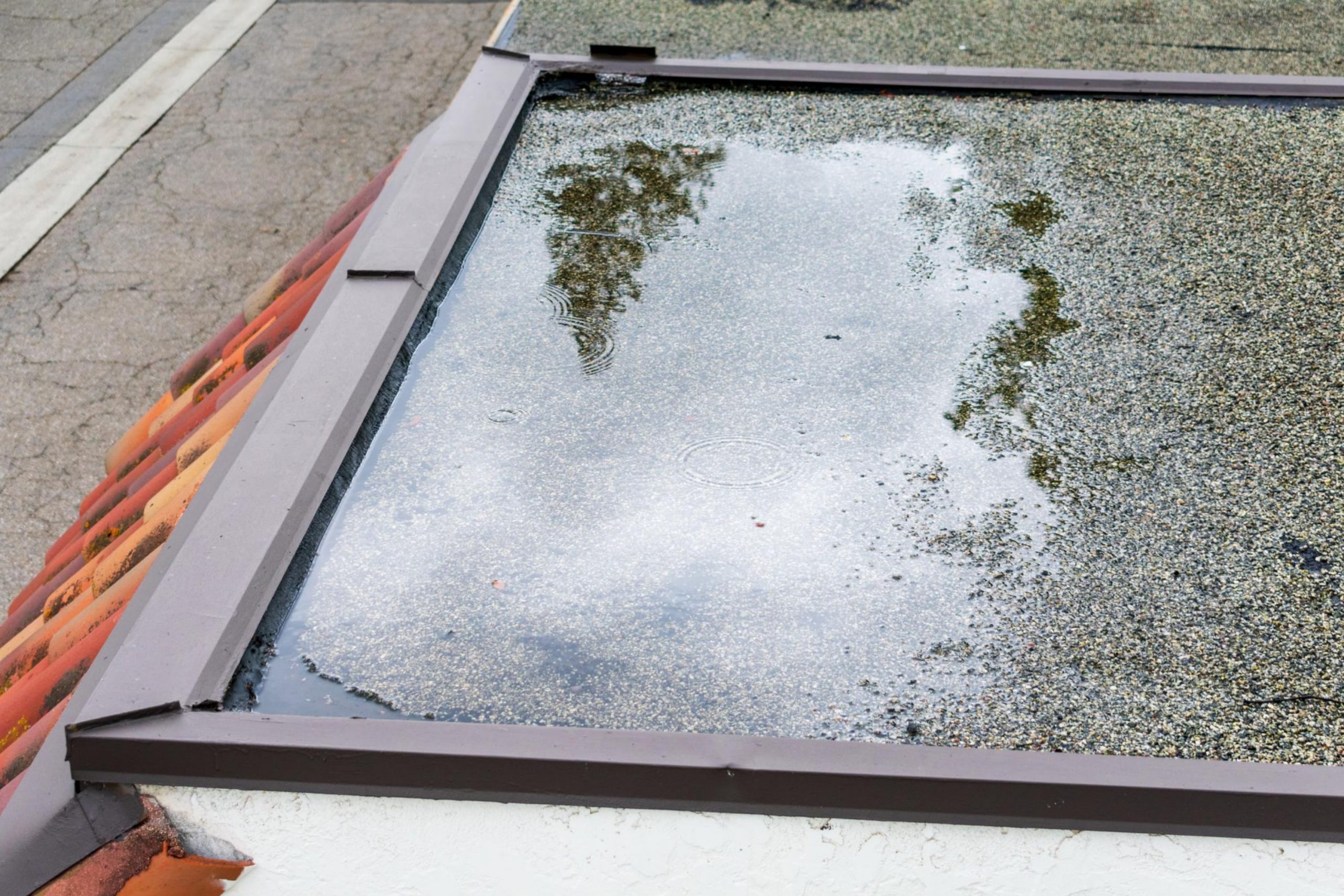If you have a leaking porch roof, this could be quite a problem! Not only it develops constant moisture, it can also damage your porch, especially if it is a wooden porch, since then its roof will be rather delicate and can be prone to mold growth and deterioration due to high moisture levels.
So today we are going to explain what to do to stop the porch roof leak. You will learn two methods that can be used effectively in order to stop the leak.
The first method will be suitable should you need a quick and short-term solution whilst the second method will be more appropriate for those who need to solve the problem once and for all.
In addition, you are going to find out what porch roof flashing is and how to install roof flashing to permanently fix your leaky roof.
How to Stop a Leak Where Porch Roof Meets the Wall?
Do you have leaks each time rain reaches your porch? Then you are definitely wondering what can be done in order to make your porch a bit more water-resistant! In fact, there is quite a simple solution to this problem.
You simply need to figure out where the leak originates first of all. And then you can use a short-term solution: caulk the leaking areas where the roof of the porch meets the siding wall of the house.
However, the best way to stop the porch roof from leaking long-term is to install flashing on the porch’s roof where it meets the house.
What is that porch flashing, you may be wondering now? Well, flashing is a piece of a thin sheet of metal. Roof installers typically use it to redirect the flow of water away from specific areas like:
- walls
- vents
- chimneys
- skylights
- roof valleys
So every roof that features any of the components mentioned above should have roof flashing installed! This will allow you to prevent leaks in the future. But to be honest, any part of a roofing system should have flashing if it is vulnerable to leaks.
Flashing is necessary even if that part of your roof is not leaking yet! It should still have flashing as a preventive measure against an inevitable leak.
Now you might be wondering what material you should choose for the roof flashing. Well, flashing is typically made of one of the three materials. The most commonly used metals for roof flashing include aluminum, copper, and steel.
Of all the three, steel is the most popular option. See, steel provides a cheap roof flashing solution that gives you a clean finish. In comparison, if you install copper flashing, it will give a great aesthetic look, but it will be more expensive than steel flashing.

Ever wished paint sampling was as easy as sticking a sticker? Guess what? Now it is! Discover Samplize's unique Peel & Stick samples.
Get paint samples
How to Install Flashing On a Roof That’s Leaking?
After you decide what material for your roof flashing you need and can afford, you might want to proceed to the installation at once. But don’t hurry up! First of all, you need to get everything ready. In particular, you need to figure out what the cause of leaks is.
If this is an old porch you need to enforce and make rain-resistant, then the culprit could be a badly installed flashing that has rusted and no longer protects the roof from leaks. If this is a new porch, then the installation might not have a roof flashing where the porch meets the siding of the house.
But either way, you need to prepare for the flashing installation first. So we recommend you read about the preparation steps first of all so that you understand better what should be done to get the roof ready. And then, you can pass to the installation process description.

How to Get Ready For the Flashing Installation?
So here is a list of steps that should be taken before you start installing your porch roof flashing.
- Remove enough siding where the porch roof and the house meet. You need to expose 4 to 6 inches of the wall underneath
- Remove the shingles on the porch roof and set them aside. You need to expose at least 4 to 6 inches of the roof deck underneath
- Inspect the underlying wall. If there is a leak, you will see a mark on the wall where the water has been. This will show you the exact location of the leak
- Inspect the wall to check for the presence of mold and wood rot. Water leaks can cause the underlying wood to rot, have a mold infestation, or both
- Inspect the roof rafters of the porch to check whether the wood is rotting or has developed mold
- Should you find any parts of the wall and/or roof rafters with rot, they should be fixed and replaced first before you proceed
- Use denatured alcohol on a clean rag to wipe the area clean of any mold. As an option, you can use a sprayer and pulverize the alcohol on the mold. Let it soak, then wipe of with a clean rag
- Inspect the siding for any mechanical damage
- Inspect the shingles to see if any of them need to be replaced
- Clean the area where the flashing will be installed
Now that you have finished the preparation stage, you can move on and start the installation phase.

How To Install Flashing On A Porch Roof?
The good thing about installing a porch roof flashing is that you can basically do it yourself without professional help. However, if you have no experience with working on the roof or you have never had to deal with a similar task, you might want to ask for help from a more skilled friend or neighbor!
- Apply a line of silicone caulk where the roof of the porch meets the house
- Position the flashing on the roof deck of the porch
- Using stainless steel roofing nails, secure the flashing on the roof deck, installing a nail every 12 inches
- Should you need to overlap multiple flashing sheets, overlap them by at least 4 inches
- Apply caulk on the surface where two flashing sheets will overlap
- Keep on placing the flashing sheets and securing them with the nails until you have covered the entire length of the area where the porch meets the house
- Reinstall the shingles above the flashing
- Replace any shingles that have damage or show signs of wear and tear
- Reinstall the wall siding on top of the flashing
- Should any part of your house’s siding have visible damage or show signs of extreme wear replace it
Ok, so we have found out what to do in order to make your porch more water-resistant. But this was the information for the open porch.
What if you have a screen porch that constantly gets wet during rainy days?
In this case, you might want to consider another approach.

How to Stop Rain From Coming In Screen Porch?
If you have a screen porch, you might be wondering how to keep rain from coming on your porch. And to be honest, you are not alone with this issue! This is one of the most common problems with a screened porch when rain gets blown in by strong winds.
One of the popular ways to prevent rainwater from getting into your porch is to install a rain screen. But you might also want to consider a few alternative options that we have described below.
Opt For Window Shades
Your first option is a window shade. The handy feature of it is that it can be unrolled when you need to protect your porch from the rain. You can then roll it up when you don’t need it.
Window shades are simple to install, and they come in different styles, which means that you can match them with your porch perfectly well. And even if you have a large area to cover, you can simply install multiple window shades!
Use Weighted Water-Resistant Curtains
You can also install curtains that are made of waterproof fabric like oilcloth or Gore-Tex in order to make your porch more rain-resistant. The major advantage of this option is that it is available in hundreds of colors and patterns!
And if you are afraid that your water-resistant curtains might be blown by the wind, you can prevent this from happening by sewing small weights into the bottom hem of the curtains.

Adjust Your Landscaping
What does that mean? This is a good long-term solution if you need to protect your porch from rain for the future. You simply need to plant trees that will cover your porch from the rain when they grow big enough.
Of course, you should note that even the thickest and the highest tree will not be able to block all the rain during a heavy storm, but it will reduce the need for heavy window shades.
There are only two disadvantages of planting trees or shrubs to block the rain. One is that they also block the wind. This can be a negative for porches that use the wind to regulate airflow. Another disadvantage is that trees can block the view.
So now you know both how to get ready for the porch roof flashing installation and how to install it. In addition, we shared a few alternative options that you can use to protect your porch from rain.
Is It Possible to Seal Your Porch Somehow to Protect It From Rain?
This is the most common question that comes from the porch owners. If your porch does not have a rain screen to protect it from rain, the floors will be constantly wet. Is there a chance to seal the porch somehow to make it less prone to moisture and destruction caused by water? In fact, there is a way! It would be a good idea to apply a wood sealer to your porch floor.
A sealer is a product that provides protection for wood. If your porch has a wooden floor that is exposed to the elements, you will want to seal it in order to protect it and make your wooden porch floor last longer than when it is unsealed.
Besides, sealers also protect the wood from moisture, chemicals, and even cleaning products! That means your wooden floor will remain smooth, and good-looking, and keep its appearance longer.
If you decide to use a sealer, the easiest way to do it is by using a garden sprayer. Simply fill the garden sprayer with the wood sealer you choose (since different wood sealers can provide different benefits to your wooden floor) and apply the product to the surface of the floor.
We recommend you pressurize the garden sprayer’s tank and adjust the nozzle to spray a fine mist. This will help you to apply a fine layer of wood sealer on your porch floor. If you skip this step, you might end up with the wood sealer applied with a thick layer on the wood.
Also, note that different sealers have different curing times! So make sure to check the recommended curing and drying time on the can of your sealer. Let your wooden porch floor dry and cure for the recommended time before you put back any of the furniture or before you step on the floor.
Well, now you know more about how to stop your porch roof from leaking when it rains. You learned what method can be used for this purpose and what alternative options you might want to use should you need to search for another approach.
And with the help of a few handy tips and recommendations we shared with you today, you will easily keep your porch safe and sound (and fully dry!) even when it’s pouring rain outdoors!

Ever wished paint sampling was as easy as sticking a sticker? Guess what? Now it is! Discover Samplize's unique Peel & Stick samples.
Get paint samples
Frequently Asked Questions
⭐What are porch enclosures?
Porch enclosures involve the installation of glass walls and glass doors to a porch. Some enclosed porches even have a semi-transparent roof.
⭐Can I seal my porch myself?
Yes, you can do this. For sealing your porch, you basically don’t need a professional help!
⭐How often shall I reseal my porch?
It depends on how heavy the traffic on your porch is, but usually, you should reapply wood sealer at least every three years. In many cases, you need to seal a wood porch once a year.


